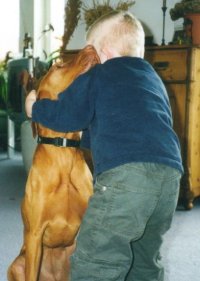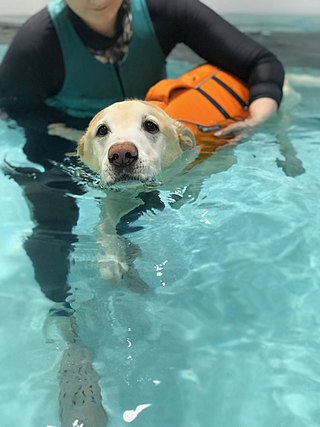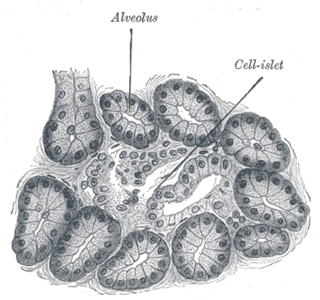Related Research Articles

Massage is the rubbing or kneading of the body's soft tissues. Massage techniques are commonly applied with hands, fingers, elbows, knees, forearms, feet or a device. The purpose of massage is generally for the treatment of body stress or pain. In European countries, a person professionally trained to give massages is traditionally known as a masseur (male) or masseuse (female). In the United States, these individuals are often referred to as "massage therapists". In some provinces of Canada, they are called "registered massage therapists."
Manual therapy, or manipulative therapy, is a part of Physiotherapy, it is a physical treatment primarily used by physical therapists, occupational therapists to treat musculoskeletal pain and disability; it mostly includes kneading and manipulation of muscles, joint mobilization and joint manipulation. It is also used by Rolfers, massage therapists, athletic trainers, osteopaths, and physicians.

Myofascial trigger points (MTrPs), also known as trigger points, are described as hyperirritable spots in the skeletal muscle. They are associated with palpable nodules in taut bands of muscle fibers. They are a topic of ongoing controversy, as there is limited data to inform a scientific understanding of the phenomenon. Accordingly, a formal acceptance of myofascial "knots" as an identifiable source of pain is more common among bodyworkers, physical therapists, chiropractors, and osteopathic practitioners. Nonetheless, the concept of trigger points provides a framework which may be used to help address certain musculoskeletal pain.
Myofascial release is an alternative medicine therapy claimed to be useful for treating skeletal muscle immobility and pain by relaxing contracted muscles, improving blood and lymphatic circulation and stimulating the stretch reflex in muscles.

The stone massage is a form of alternative medicine massage therapy and bodywork involving the placement of either heated or cooled stones to the body for the purpose of pain relief, relaxation and therapy. There are many variations and techniques used in the application of stone massage therapy, deriving from a variety of traditional practices. Stone massages are primarily used to alleviate physical pain issues, however, are also used to promote emotional and spiritual wellbeing in practice.

Canine parvovirus is a contagious virus mainly affecting dogs and wolves. CPV is highly contagious and is spread from dog to dog by direct or indirect contact with their feces. Vaccines can prevent this infection, but mortality can reach 91% in untreated cases. Treatment often involves veterinary hospitalization. Canine parvovirus often infects other mammals including foxes, wolves, cats, and skunks. Felines (cats) are also susceptible to panleukopenia, a different strain of parvovirus.
Pet insurance is a form of insurance that pays, partly or in total, for veterinary treatment of the insured person's ill or injured pet. Some policies will pay out when the pet dies, or if the pet is lost or stolen.
Epilepsy in animals is a group of neurological disorders characterized by seizures, caused by uncontrolled, abnormal bursts of electrical activity in the brain. They can start and stop very abruptly and last any amount of time from a few seconds to a few minutes. Canine epilepsy is often genetic but epilepsy in cats and other pets is rarer, likely because there is no hereditary component to epilepsy in these animals.
Organ replacement in animals is an emerging field in veterinary science, focusing on improving and prolonging the lives of animals through the replacement or augmentation of damaged or dysfunctional organs. Despite its relative rarity compared to limb prosthesis, strides have been made over the decades, with notable milestones such as the first pacemaker surgery on a dog in 1968 and successful kidney transplants in cats since the mid-1980s. This field faces challenges, particularly in canine programs, due to issues related to immunosuppression. Ethical considerations also exist, particularly concerning the treatment of donor animals, underscoring the need for ongoing discussions and regulations in this dynamic field.

Veterinary surgery is surgery performed on non-human animals by veterinarians, whereby the procedures fall into three broad categories: orthopaedics, soft tissue surgery, and neurosurgery. Advanced surgical procedures such as joint replacement, fracture repair, stabilization of cranial cruciate ligament deficiency, oncologic (cancer) surgery, herniated disc treatment, complicated gastrointestinal or urogenital procedures, kidney transplant, skin grafts, complicated wound management, and minimally invasive procedures are performed by veterinary surgeons. Most general practice veterinarians perform routine surgeries such as neuters and minor mass excisions; some also perform additional procedures.

Equine massage is the practice of massage on horses. Beginning in the early 1990s, it has been a growing field of equine therapy, used for both day-to-day riding and post-trauma rehabilitation. Proponents list a number of positive effects, including the improvement of movement and the reduction of pain and stress responses.

Animal-assisted therapy (AAT) is an alternative or complementary type of therapy that includes the use of animals in a treatment. The goal of this animal-assisted intervention is to improve a patient's social, emotional, or cognitive functioning. Studies have documented some positive effects of the therapy on subjective self-rating scales and on objective physiological measures such as blood pressure and hormone levels.

Canine hydrotherapy is a form of hydrotherapy directed at the treatment of chronic conditions, post-operative recovery, and pre-operative or general fitness in dogs.
Alternative veterinary medicine is the use of alternative medicine in the treatment of animals. Types alternative therapies used for veterinary treatments may include, but are not limited to, acupuncture, herbal medicine, homeopathy, ethnomedicine and chiropractic. The term includes many treatments that do not have enough evidence to support them being a standard method within many veterinary practices.

Veterinary chiropractic, also known as animal chiropractic, is chiropractic for animals – a type of spinal manipulation. Veterinary chiropractors typically treat horses, racing greyhounds, and pets. Veterinary chiropractic is a controversial method due to a lack of evidence as to the efficacy of chiropractic methods. Contrary to traditional medicine, chiropractic therapies are alternative medicine. There is some degree of risk associated with even skilled manipulation in animals as the potential for injury exists with any technique used. The founder of chiropractic, Daniel David Palmer, used the method on animals, partly to challenge claims that the placebo effect was responsible for favorable results in humans. Chiropractic treatment of large animals dates back to the early 1900s. As of 2019, many states in the US provide statutory or regulatory guidelines for the practice of chiropractic and related treatments on animals, generally requiring some form of veterinary involvement.
Dogs are susceptible to allergies much like their human companions. Most allergies occur in dogs over 6 months old. A dog that is repeatedly exposed to a particular allergen becomes sensitized to it, and the immune system overreacts to a subsequent exposure, most commonly manifesting in the form of skin irritation. Some of the signs are redness, itching, hair loss, and recurring skin infections from the irritation. The dog may be more prone to scratching and licking at the irritated site, further exacerbating the problem.

Physical therapy for canines adapts human physical therapy techniques to increase function and mobility of joints and muscles in animals. Animal rehabilitation can reduce pain and enhance recovery from injury, surgery, degenerative diseases, age-related diseases, and obesity.

Diabetes mellitus is a disease in which the beta cells of the endocrine pancreas either stop producing insulin or can no longer produce it in enough quantity for the body's needs. The disease can affect humans as well as animals such as dogs.
Cat massage is a practice used by veterinarians and at home by pet owners to apply massage therapy techniques to domestic cats, primarily for relieving pain and discomfort, as well as a means of strengthening the cat–human bond through intimate interaction.

Human–canine bonding is the relationship between dogs and humans. This relationship can be traced back to at least 15,000 years ago, to the Bonn-Oberkassel dog, who was found buried alongside two humans. For centuries, dogs have been considered man's best friend. This is most evident in Western countries, such as the United States, where 44% of households have a pet dog.
References
- 1 2 "Archived copy" (PDF). Archived from the original (PDF) on 2010-10-10. Retrieved 2010-02-28.
{{cite web}}: CS1 maint: archived copy as title (link) - ↑ "Archived copy" (PDF). Archived from the original (PDF) on 2011-07-07. Retrieved 2010-02-28.
{{cite web}}: CS1 maint: archived copy as title (link) - ↑ https://www.mdpi.com/2076-2615/13/18/2836
- ↑ "Glossary".